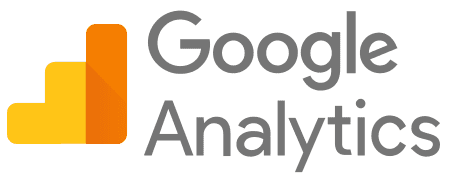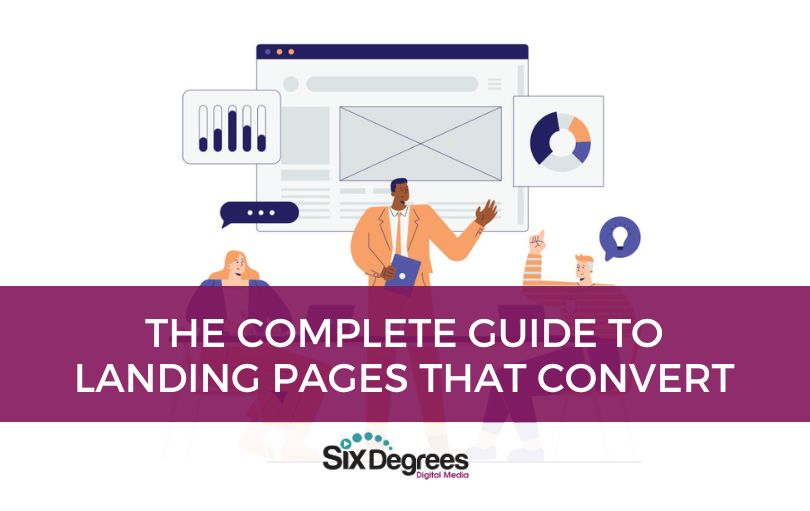
Whether you’ve been around for a few decades or just opened your doors, one thing is for certain: you need an online presence. First off, it gives your business credibility as a real business. Second, without an online presence, there is no way to capture the attention of customers looking for a business just like yours.
We have been working with online and local businesses for over a decade. One of our clients even got a call from a local TV news station and was interviewed on TV! The station found them from doing an online search. I’m not saying that will happen to you, but there are a lot of possibilities when you build your online presence.
One of the most important elements to your online presence is to differentiate yourself from everyone else. Why is your business different? Think about that for a minute. If I were to walk into your business today, what would you tell me, or show me, to make me realize you are the one I should do business with over your competitor?
So many people use the same story. They talk about the features of their business and their professional, experienced staff. That isn’t enough. Sure, there will be an element of chemistry once customers meet you, but how do you even get in front of them? We’ll cover that and more.
There are certain key elements that you need to take into consideration in order to be found online.
Once you know all the components and logistics of where you need to be, then you can work on what you need to say and how to promote your business.
Laying the Right Foundation for your Website
If you want to help build your business by being found in the search results, it all starts with having a solid foundation for your website. The search engines need to be able to read what your site is about in order to decide what search terms your website matches. This is called relevance. Your site needs to be relevant to the search terms you want to be found for.
You can think of your website like your house. It has a foundation and certain necessary elements to make it livable or usable. Then there are other features that make it more attractive. The foundation of your website is the coding and content, while layout, design, and media are the features that make your site more attractive.
Coding
In order for the search engines to find you, you have to have proper coding and content. There are many tools to check if your coding is solid. You can use Screaming Frog (I know it’s a funny name, but it works) – this is software that you download. There is a paid for version, but you’ll likely get what you need with the free version. Next there is also W3c Validator. This is a free, web-based tool. You just add your URL, hit submit, and off you go.
Lastly, you can also check Google Page Speed Insights which will give you a lot of data as well and this is straight from Google, so you want to pay attention to this. You do not have to be in the dark. Google will tell you exactly what you need to fix. You’ll want to pay attention to the rollout of Core Web Vitals as well.
These tools will tell you about errors in coding and other areas on your website and what needs to be fixed. This may be best left to your webmaster or web developer to handle, unless you are dying to get into the code of your website. This is not recommended unless you are actually studying code. If your website is a main source of business for you, then leave it to the professionals. I have my web developer do all of our coding unless it is a simple edit.
Make sure you have a backup copy of your site first. WordPress has many plugin options for and your hosting provider likely makes a backup of your site at least weekly. It is best to have your own copy, as the hosting company may override your backup.
Meta data (more code-speak)
Now let’s talk about meta data, which sounds more difficult than it actually is. Your meta data also helps the search engines know what each page of your website is about. One of the reasons we love the WordPress platform so much is there are plugins that make this task pretty simple. What is included in your meta data? I’m glad you asked.
Title tags – These are not necessarily the page titles that the visitor sees in your page navigation (although it can be). You get 60 or so characters to explain what your page is about. Your title tag is very important.
DO NOT use the same title tag on every page of your website
Think of your title tags as the rooms of your house. Not every room is the kitchen. Remember our buddy Screaming Frog? Well, that tool will also tell you if you have duplicate page titles.
Meta description – This is for the reader, not the search engines. The meta description is what people see in the search results, just under the site title. This is your mini commercial and is what will help the searcher decide to click on your site or not. Make sure you have strong, descriptive content here. Stand out from the crowd, and searchers will be more likely to click on your link. You know what makes you special; tell them in your description. The challenge is that you only get 160 characters, so you’ll have to play around with the wording to get it just right.
Alt text – One other thing to mention is that you want to have alt text (also known as alternative text) associated with all of your images. Alt text is helpful because the search engines cannot read an image. By using alt text tags on your images, your visitors and the search engines will know what those pictures are all about.
A little secret here is that Google always bolds the words that match the searcher’s terms. In addition to that, they like to show pages that are relevant to that search term in the search results. You could be losing out big time if you are using the same meta title on every page. I will go so far as to say that if you are using a template site that doesn’t allow you to change your meta title for each page, you need to quit using that template and get a new website immediately!
Content
Speaking of being relevant, let’s discuss just how relevant your content is. Remember how we talked about your meta-titles being like rooms of your house? That is how you want to lay out your website and content. Don’t just have a couple of pages with one page naming all the products or services you offer (although that is okay for a gateway page).
Also, if you have something else that is unique, have a page specifically about that to capture the attention of the search engines and your visitors. No two businesses are the same, even in the same industry. Each of these pages will have an opportunity to rank in the search engines
Now that you have a better understanding of what pages you need, let’s talk about what type of content you need on those pages. First off, all page content should be unique. Not just on your own site, but from other pages on the Internet. Back to our house analogy: Do you want all the rooms to look identical? Of course not. The search engines don’t want to serve up the same content over and over again, either.
The two tools you can use to check for duplicate content are:
- Siteliner (check for duplicate content within your site)
- Copyscape (check for duplicate content around the web – there is a charge of $0.05 per piece of content)
Another issue that comes up frequently is low word count on the page. Don’t be afraid to sing your praises here. Just as you would display your fine works of art on your wall, go ahead and tell (and show) your visitors what you have to offer. Aim for 500 words on inner pages. That may be a challenge for some pages. For pages you would like to rank in the search engines, though, it is a good rule of thumb.

Keep in mind that the formatting of your content is also important. Here are some tips to follow:
- Break up your content with images.
- Avoid using jargon or confusing words.
- Use headings and bullet points to make the content easier to read
- Consider using video where you can.
Links
Feel free to link to other pages on your site within your content. Reference other pages where it makes sense and be sure to direct readers to your contact page.
Don’t be afraid to link out to other websites that are related to your school, industry or location. Outbound links are good are a sign of a healthy site. Don’t worry, you can code these links so that they open up in another tab, keeping users on your site as well.
For instance, you may have a link to:
- Sites that compliment your business
- Associations you belong to
- Manufacturers’ product sites
- Chamber of Commerce
- Local Area Attractions
- And More
The search engines do like to see authority outbound links on your website, so do not overlook this tip.
Don’t forget to add a call to action to your pages. At the bottom of each page, encourage customers to “Call now for more information.” Add your phone number or hyperlink to your Contact page.
Blogging

If you are a local business, consider categories such as:
- Tips that your customers will find useful
- Information on what is happening in your industry
- Other resources
- Toot your own horn once in a while.
Try to put up a blog post once a week. Aim for a 500+ word blog. Although if you want to have content that ranks in the search engines, shoot for 1500+ words.
You can also add infographics and video as blog posts as well.
Other
Here are a few more things to be sure you include on your site.
- Have a map to your location on the Contact page.
- Your website MUST be mobile friendly.
- Make sure you have your address and phone number listed on all pages.
- Text in your footer is best
- Include social media links to gain followers.
- Offer quotes or testimonials from happy clients, customers, patients, or students.
- Have a form that visitors can fill out if they prefer to contact you electronically.
- If you have a free gift with a course, or a discount on a program, encourage the visitor to fill out your form to claim that offer.
- Now you can start generating a list to email with offers.
- If you want to know how visitors behave on your website, Google Analytics code is a must.
- Google Search Console offers additional data about your website, such as what search terms are bringing people in.

Make sure YOU own the Google account that is associated with your website. Do not have your webmaster or marketing company set this up in their name. You want to have the access and own this information. This way if the relationship ends, you still control the account.
Recap:
- Check the coding of your website and fix any coding errors
- Have unique page content and meta data throughout your website
- Have internal and external hyperlinks throughout your site
- Blog at least once a week
- Use multiple forms of media on your website (text, images, infographics, video)
- Have a form to capture visitors’ information – it helps to have an incentive
- Address and phone number on every page
- Add Google Analytics and submit your sitemap to Google Search Console
- Make sure your website looks good on tablets and mobile devices
- Follow the rules
If you need help with your website, contact us for a quote.




